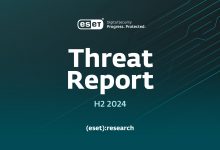
Decreased risk: Since EDR tools continuously monitor systems and endpoints, companies are able to quickly detect and respond to threats in real time and reduce the risk of attacks.
Fewer false positives: EDR tools investigate suspicious activity before they alert security analysts. If the software determines a suspicious event is not malicious, the alert is closed, reducing the number of false-positive alerts security teams must analyze.
Rapid incident response: Typically, security analysts spend four to five hours investigating attacks. EDR tools, however, automate several processes that analysts would usually perform manually, significantly accelerating response times.
Pitfalls to avoid
One of the biggest pitfalls is thinking that EDR is a “set it and forget it” type of solution, says Michael Suby, research vice president, security, and trust at IDC. “You can’t assume you just drop the software in and it does everything for you, because it doesn’t,” he says. “You have to have sufficient in-house talent that have to learn and operate the software effectively.”
Mellen agrees with this assessment. “This technology requires having someone in the platform every single day,” she says. “It’s very important to note that this is not something that you’re just going to set up and then leave to its own devices. You need people addressing these alerts.”
EDR software can also be more expensive than traditional antivirus software in terms of the initial investment and the costs of ongoing maintenance, making purchasing, implementing, and maintaining these tools too costly for small and midsize businesses.
Another pitfall is not having sophisticated operators to use the software, according to Firstbrook. “EDR software requires relatively sophisticated operators to use it because it will detect things that are suspicious but not necessarily malicious,” he says. “And the operator has to trace the path of the event and determine whether it’s malicious or not based on the behavior. So, it will require more sophisticated operators or it may require you to outsource that operation to somebody else, which increases the cost.”
Additionally, some EDR tools may have limited scalability, making it hard for companies to improve their security postures as they grow. And during peak-usage times limited scalability can cause delays or downtime, affecting organizations’ abilities to quickly detect and respond to security incidents.
There are a number of endpoint detection and response tools on the market, so to help you begin your research, we’ve highlighted the following products based on discussions with analysts and independent research.
Cisco Secure Endpoint: Integrates prevention, detection, threat hunting, and response capabilities. Protects Mac, Windows, Linux, iOS, and Android devices through public or private cloud deployments. Includes definition-based antivirus engines that are constantly updated for Windows, Mac, and Linux endpoints. Stops malware in real-time. Protects endpoints against current and emerging cyberthreats. Monitors endpoints continuously to enable companies to detect new and unknown threats. In addition, provides companies with detailed endpoint visibility and response tools so they can quickly and efficiently deal with security breaches. Automatically hunts threats to help companies easily identify the 1% of threats that may have flown under the radar.
CrowdStrike Falcon Insight: Enables companies to automatically detect and prioritize advanced threats on Windows, Mac, Linux, ChromeOS, iOS, and Android. Offers real-time response capabilities to provide direct access to endpoints being investigated. Uses AI-powered indicators of attack to automatically identify attacker activity. Prioritizes alerts, which eliminates manual searches and time-consuming research. Integrated threat intelligence provides the total context of an attack, including attribution. CrowdStrike’s metric enables organizations to understand their threat levels in real time so security teams can more quickly determine if they are under attack. This also allows security leaders to assess how severe the threats are so they can coordinate the appropriate responses.
Microsoft Defender for Endpoint: Helps protect against file-less malware, ransomware, and other sophisticated attacks on Windows, macOS, Linux, iOS, and Android. Enables security teams to hunt for threats over six months of historical data across the business. Provides threat analytics reports so companies can quickly get a handle on new global threats, figure out if they are affected by these threats, evaluate their exposure, and determine the appropriate mitigation actions to take to boost their resistance to these threats. Monitors for Microsoft as well as third-party security configuration issues and software vulnerabilities then takes action automatically to mitigate risk and reduce exposure.
SentinelOne Singularity: A comprehensive endpoint, cloud, and identity security solution powered by artificial intelligence. Combines endpoint protection, EDR, a cloud workload protection platform as well as identity threat detection and response into one platform. Protects multiple operating systems, including Windows, macOS, Linux, Kubernetes instances, and mobile. Offers enhanced threat detection, improved incident response time, and effective risk mitigation. Gives security teams visibility across the business, powerful analytics, and automated responses. A cloud-based platform, Singularity is easy to deploy, highly scalable, and offers a user-friendly interface.
Trend Micro Apex One: Offers threat detection, investigation, and response within a single agent. Integrates with Trend Micro’s Vision One platform to provide EDR and extended detection capabilities. Supports for all current operating systems, i.e., Windows, macOS, Android, and iOS, and a number of legacy operating systems. Stop attackers sooner with protection against zero-day threats, using a combination of next-generation anti-malware techniques and virtual patching. Protect endpoints against threats, such as ransomware, malware, and malicious scripts. Offers advanced protection capabilities to protect endpoints against unknown and new threats. Offers a wide range of APIs for integration with third-party security tools.





